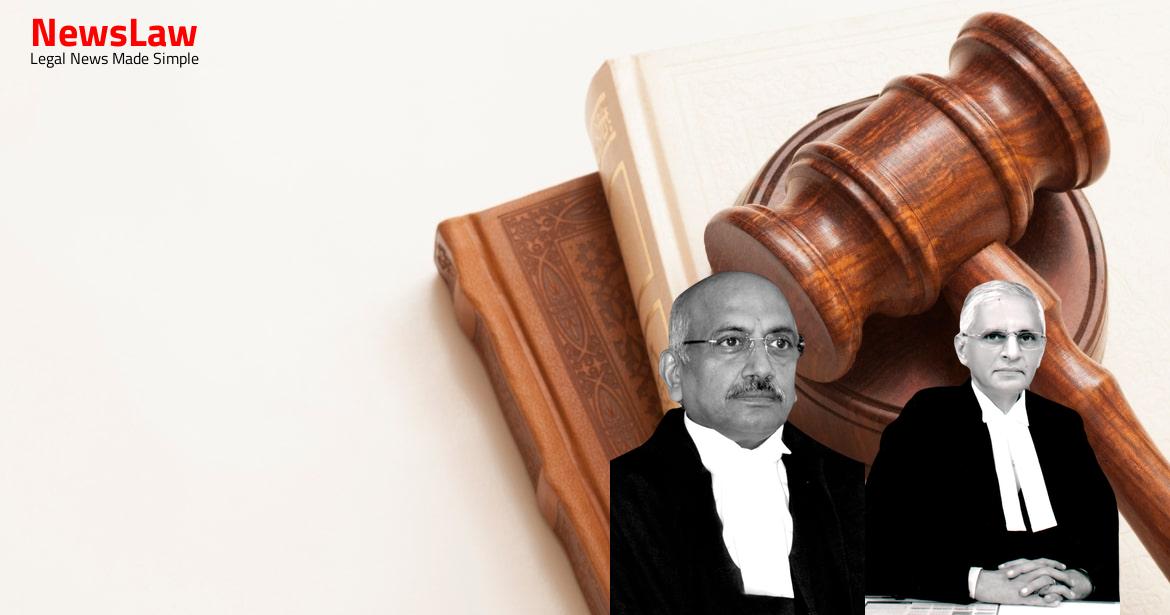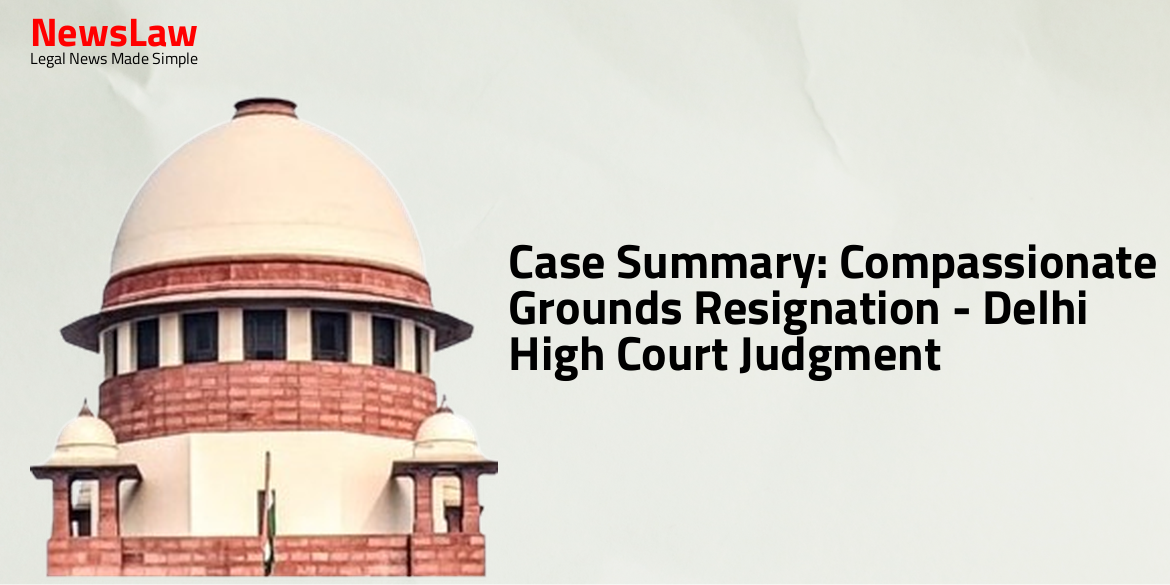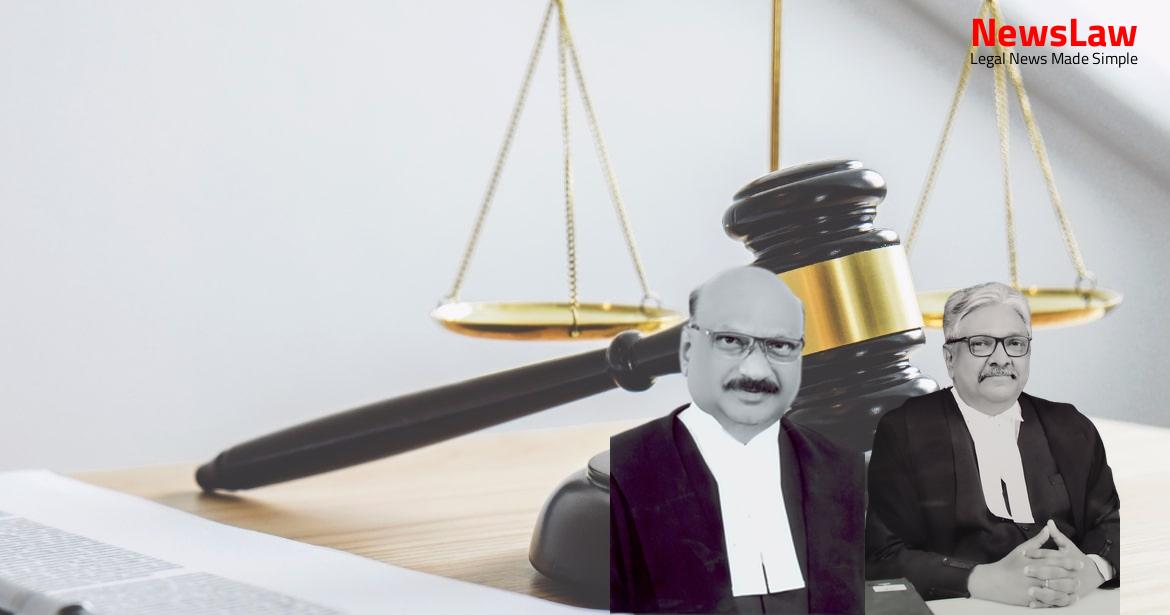Explore the intricate legal analysis in a recent court case that delves into the interpretation of international air carriage laws. The judgment delves into the application of Rule 30 of the Carriage by Air Act, 1972, and the Vienna Convention to resolve ambiguities and provide a clear legal perspective. The court’s in-depth analysis aims to maintain uniformity and ensure the accurate interpretation of international treaties in alignment with established legal principles.
Facts
- The FAC part of the judgement outlined the key facts and background of the case
- It discussed the legal arguments presented by both parties
- It analyzed the relevant laws and precedents in making its decision
- The court considered the testimonies of witnesses and expert opinions
- The FAC section addressed any procedural issues raised during the trial
- The judgement in this part concluded with the court’s decision on the case
- Trial Court held that the suit is not barred by limitation as the period prescribed in Rule 30 of the Second Schedule to the Carriage by Air Act, 1972 could be calculated from 28.10.2010.
- High Court allowed the Writ Petition and held that the suit is barred by limitation.
- Appellant filed a Writ Petition No 6647/2014 before the High Court of Bombay aggrieved by the decision of the Trial Court on the preliminary issue.
Also Read: Judicial Review of Administrative Actions in Educational Matters
Arguments
- Shri Vinay Navare, Senior Advocate, appearing for the Appellant, argued that Section 29(2) of the Limitation Act applies unless expressly excluded.
- Rule 30(2) explicitly enables the method of calculating the period of limitation based on the law of the Court seized of the case.
- Navare emphasized the complementary nature of the provisions of the statutes and urged for a harmonious reading of them.
- Reference was made to judgments from the UK and the US where municipal laws governing the period of limitation were not applied to claims under statutes based on international conventions.
- The Respondent argued that Rule 35 of the Third Schedule, not Rule 30 of the Second Schedule of the Air Act, 1972, is applicable in this case.
- The Respondent emphasized the importance of uniform interpretation of international conventions to achieve harmonization in their application.
- The Respondent referred to the judgment in Hukumdev Narain Yadav v. Lalit Narain Mishra to support their argument.
- The purpose of International Conventions was highlighted as collective State action for harmonization and codification of rules governing international air carriage.
- References to court judgments in the UK, USA, and Australia were made to strengthen the Respondent’s submissions.
Also Read: Scope of Rule-Making Power in Disciplinary Proceedings
Analysis
- The analysis of the judgment focused on the interpretation and application of Rule 30 of the Second Schedule of the Carriage by Air Act, 1972.
- The conflict between Sub-rule (1) and Sub-rule (2) of Rule 30 was resolved by referring to the legislative history of the conventions as provided in the Vienna Convention on the Law of Treaties, 1969.
- Consistent interpretation of Article 29 of the Warsaw Convention in different jurisdictions was considered to maintain uniformity.
- The deletion of the expression ‘of limitation’ in the Montréal Convention of 1999 caused uncertainties in the exact application of the rule.
- The purpose of Rule 30 was analyzed in the context of the extinguishment of the right to damages after two years.
- The role and impact of the Limitation Act, 1963 were discussed, particularly in cases where the right itself is extinguished.
- The significance of express exclusion of the Limitation Act in the special law, as provided in Section 29, was highlighted for clarity and legal applicability.
- Various court decisions and interpretations from other jurisdictions were examined to derive a comprehensive understanding of the legal provisions and their implications.
- The importance of interpreting international treaties in line with established principles and prior court decisions to ensure consistency and clarity in legal interpretation.
- The objective of the analysis was to determine the true and correct meaning of Rule 30 to resolve any ambiguities and provide a clear legal perspective.
- Rule 27(3) requires complaints to be made in writing.
- Rule 30 of the Air Act, 1972 establishes a two-year limitation period for claiming damages.
- The Vienna Convention on the Law of Treaties, 1969 provides guidelines for interpreting treaties.
- Rule 30 of the Second Schedule incorporates the Hague Protocol and stipulates the extinguishment of the right to damages if an action is not brought within two years.
- Sub-rule (2) of Rule 30 states that the method of calculating the limitation period is determined by the law of the Court seized of the case.
- Articles 31 and 32 of the Vienna Convention pertain to the interpretation of treaties.
- The right to damages is extinguished after the expiry of the specified period mentioned in Rule 30.
- The Limitation Act does not apply when the right to damages is extinguished.
- The method of calculating the limitation period in Sub-Rule (2) of Rule 30 relates to factors other than the specified dates in Sub-Rule (1).
- The High Court of Madras decisions in M.R.F. Ltd. v. M/s Singapore Airlines Ltd., M/s Air India Bombay Airport and Another v. M/s Asia Tanning Co. and Anr., The Shipping Corporation of India Ltd., Bombay and Anr. v. Union of India, The East and West Steamship Company, Georgetown, Madras v. S.K. Ramalingam Chettiar, Air India Ltd. v. Tej Shoe Exporters P. Ltd. and Anr., and Gulf Air Company v. Nahar Spinning Mills Ltd. and Others were relied upon by the High Court.
- These cases established that the Carriage by Air Act, 1972 excludes the applicability of the Limitation Act.
- The observation made by the High Court was that the Carriage by Air Act, 1972 specifically excludes the applicability of the Limitation Act.
- In The East and West Steamship Company v. S.K. Ramalingam Chettiar, the Court considered Clause of Para 6 of Article III in Schedule to the Indian Carriage of Goods by Sea Act, 1925.
- The expression ‘discharge from liability’ was interpreted in the context of barring the remedy of the shipper or consignee versus terminating the right altogether.
- The drafting history of the Warsaw Convention indicates that Article 29(2) operates as a statute of repose, extinguishing a cause of action after a fixed period of time, regardless of when the cause of action accrued.
- Various courts rejected the contention that Article 29(2) incorporates tolling provisions applicable in different forum states.
- The Warsaw Convention aimed at removing actions governed by it from the uncertainty of various tolling provisions of member states’ laws, establishing a fixed two-year time limitation.
- Different courts, including the Supreme Court of the United Kingdom and the Federal Court of Australia, held that the local limitation law does not apply under the Warsaw Convention.
- The primary concern of the drafters was to ensure certainty in legal relationships governed by the Convention, hence the absolute two-year time limitation mentioned in Article 29.
- The Supreme Court held that Article 29(2) does not allow the two-year period to be suspended, interrupted, or extended by domestic law, thus emphasizing the uniformity and certainty intended by the Convention.
- The words ‘discharged from all liability’ in international legislation are construed to imply a total extinction of liability, eliminating any possibility of acknowledgment of liability thereafter.
- Rule 30 of the Carriage by Air Act 1972 excludes the applicability of the Limitation Act, 1963.
- Issue No.2 is answered accordingly.
- The appeal arising from SLP No 16767 of 2018, involving the High Court of Judicature at Bombay in WP No. 6647 of 2014, is dismissed.
- In India, a mandatory pre-trial mediation scenario could arise if the legislature envisions it.
Also Read: Conviction and Sentencing Analysis in a Criminal Appeal Case
Decision
- The parties shall bear their own costs.
- Each party is responsible for paying their legal expenses.
- No costs will be awarded to either party.
Case Title: M/S BHAGWANDAS B. RAMCHANDANI Vs. BRITISH AIRWAYS (2022 INSC 768)
Case Number: C.A. No.-004978-004978 / 2022



